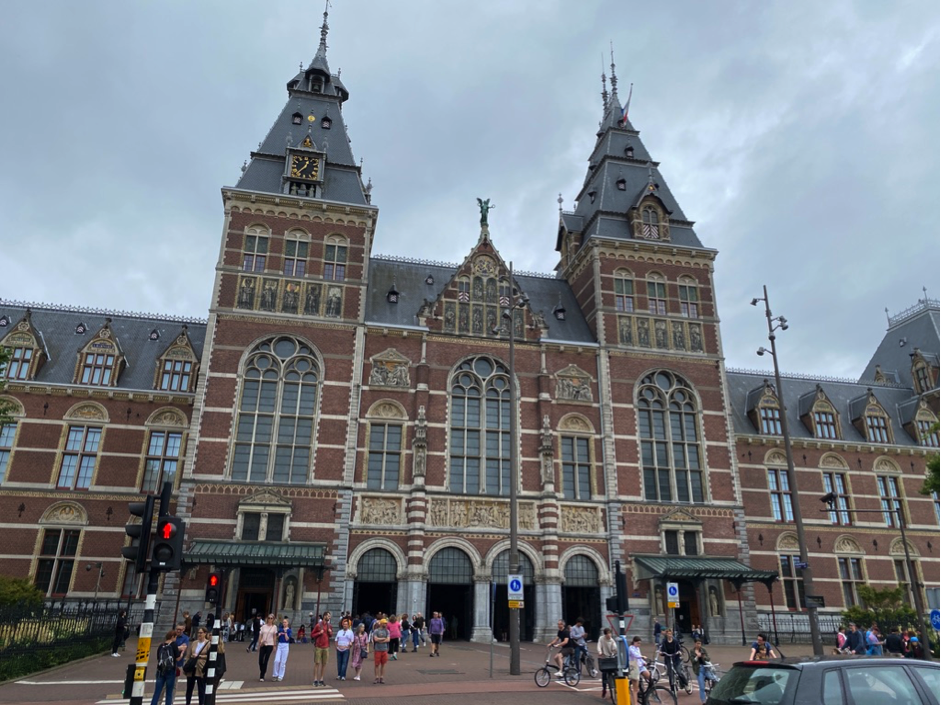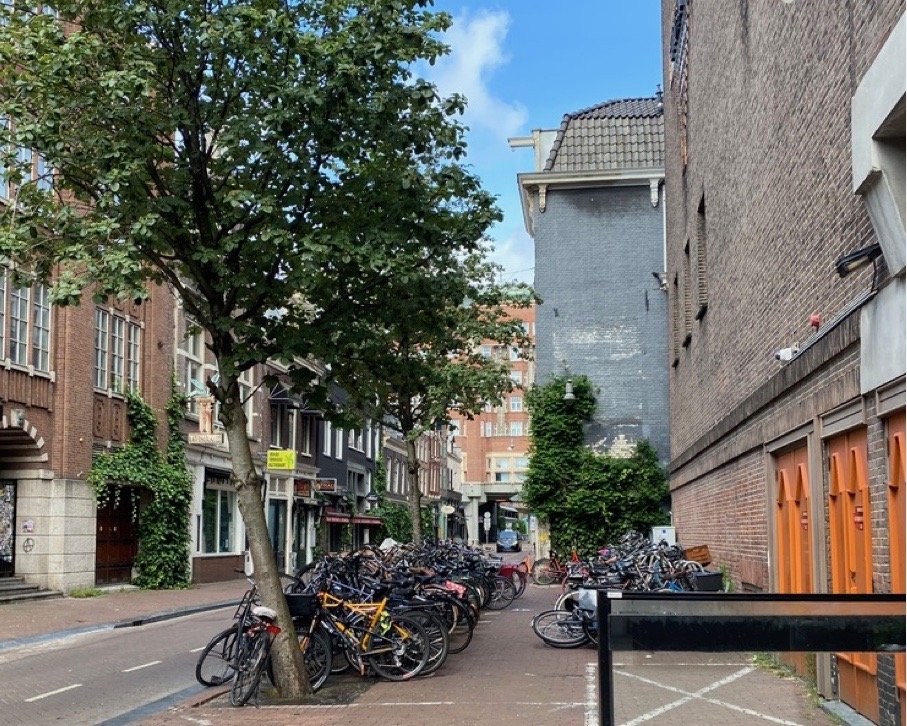Insights into urban sustainability, from an American in Amsterdam
Bustling citizens, an elaborate public transportation system, bike lanes on every street, a plethora of parks and open squares—from the moment I stepped out of Amsterdam’s Centraal Station, I was enamored. My reaction was probably not uncommon for an American tourist, as most European cities stand in stark contrast to American ones. Our cities are concrete oases, often without the character that would allow you to distinguish one from the next. Tennessee Williams once said, “America has only three cities: New York, San Francisco, and New Orleans. Everywhere else is Cleveland.” But what is chiefly responsible for this difference between America and Europe? And what does it mean for the sustainability of America’s cities?
Centraal Station in Amsterdam
Modes of transportation represent one culprit, and, specifically, structuring cities around the use of cars. In the early 20th century, before automobile use really took hold, American cities had much more in common with European ones than they do now. There was a basic blueprint of parks, open squares, and plenty of walkable streets. Rather shockingly, you might easily mistake old pictures of American cities as European. For instance, a photo of Philadelphia's Market Street in 1905 shows most people walked or used the trolley system. It’s not dissimilar to Main Street in modern-day Amsterdam, as I witnessed.
Car culture did not take hold of Europe like it did America. After World War II, both regions experimented with modern design principles, like building freestanding houses and towers, and optimizing cities for automobile use. Implementing these principles was more feasible in the US due to its abundance of open space, especially in the West. When American cities ran out of room for roads and houses, they could simply expand into the open countryside, a phenomenon known as urban sprawl. As America continued on this road, it also led to the birth of suburbia, aided by mass production and the American dream—which instilled in most people a longing for a car, a freestanding house, and perhaps a white picket fence.
Urban sprawl gained a bad reputation in Europe early on for its destructive environmental effects, and the hassle of increased automobile traffic made cars less popular. Thus, while America was embracing automobile-centered urban design, Europe began to oppose it. Rather, Europeans began to look once again to the urban principles that they had relied on for centuries prior. They opted for a traditional city design with modern elements, and Amsterdam is an example.
Street in Amsterdam
On the other hand, Philadelphia's Market Street today features tall, generally undistinguished-looking buildings lined up along multiple lanes of motor vehicle traffic and parked vehicles.
Beyond its aesthetic downgrade, America’s automobile-centered urban design has also had unfortunate environmental consequences. We can see this more clearly through a comparison of Atlanta and Barcelona, two cities with a similar population size and GDP per capita.
Due to urban sprawl, Atlanta’s urban area is much larger than Barcelona’s despite having a similar total population. In a 2009 Sapiens article, Benoit Lefèvre and Gaëll Mainguy noted that “climate change will take on very different proportions by the end of the century” depending on whether growing cities follow the model of Atlanta or of Barcelona. “Barcelona houses and employs 20% more inhabitants than Atlanta, in an area 26 times smaller, and consumes 11 times less energy per inhabitant for urban transport,” Lefèvre and Mainguy observed. Barcelona, in step with European cities more generally, is much more efficient with its use of space. This efficiency also allows residents to get to where they need to without the use of cars. They have the option to walk, bike, or use public transportation. Because US cities like Atlanta take up much more space, they force more inhabitants to depend on cars. This also means that each inhabitant uses much more energy for transportation, so they burn more fossil fuels. Hence, automobile-centered cities also do a disservice to the climate.
I think what surprised me in Amsterdam was not only the high quality of life one could have in such a pleasant, walkable city: I also realized that what makes European cities so pleasant goes hand in hand with what makes them environmentally sustainable. For once, it seemed like human interests aligned with natural interests. If the US could somehow mimic Europe, even in small ways, it would be a win both for people and the environment. How can we make our cities more walkable, livable, and sustainable?
Bustling Amsterdam streets prioritize bike, pedestrian, and trolley traffic alongside cars
We have to look at what set American cities down this path in the first place: cars. Cities and local governments can take steps to reduce car use by creating more pedestrian-only areas in the inner city, expanding walkable networks to allow residents to directly walk to their destination instead of driving, and zoning areas for a mix of residential and commercial uses—so that everything residents need, even their work, is within walking distance. Other solutions include expanding bike lanes and investing more in public transportation. Ideally, even in cities like Atlanta where urban sprawl has taken hold, residents should be able to choose whether or not to own a car. They should have a plethora of transportation options to choose from. That way, cities’ inhabitants emit less carbon and pollute less. Moreover, seeing people out and about—walking to their destination or perhaps lounging in a local park—not only reflects livable cities, but it makes people feel more engaged and connected to their communities. This feeling might even push residents to stay engaged in other ways, like voting in local elections, especially if they can simply walk to the ballot box.
Certainly, America is not Europe. Beyond the differences in our cities, our cultural differences also set us apart. In fact, our cities are quite intertwined with our culture. American reliance on automobiles has indeed become a cultural phenomenon, but only in our country’s recent history. For our own sake and that of nature, we must tap into a longer-standing feature of our culture: we strive for improvement and advocate for our needs at the local and federal level. We can reconfigure our cities, over time, to make them more sustainable and pleasant.
Jordan Akers, a student at Yale University, is a CivicStory Sustainability Ambassador


